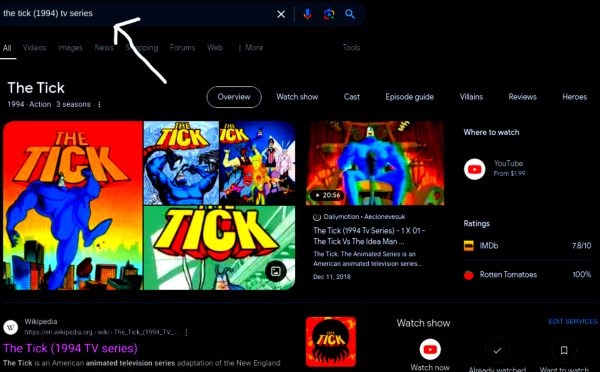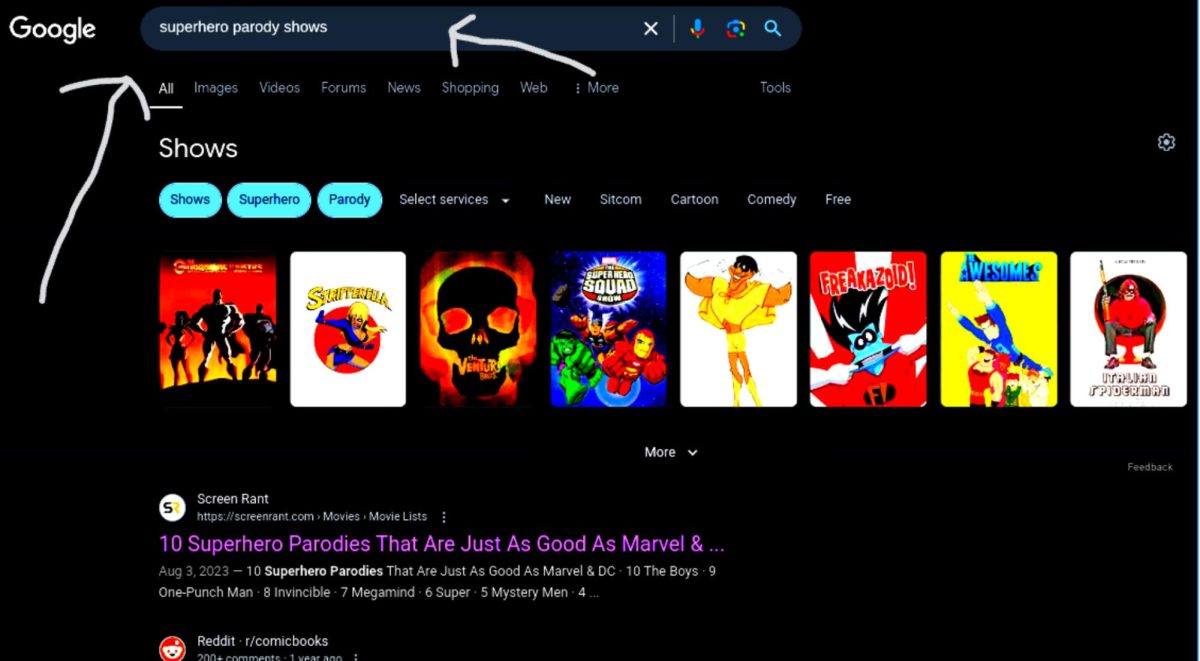When people think of superhero shows, they think of simple, sympathetic heroes with whom they can easily identify, and conventionally bad villains who have base motivations for their actions. Superhero parody shows differ.
This genre of entertainment makes fun of generic conventions, performs comic reversals of them, ponders where they originate and says what typically goes unsaid – that superpowers, as well as superheroes, logically come with their own set of drawbacks.
The people who generally watch superhero parody shows can be divided into two categories. One, the people who are not fond of the superhero genre as-is, and two, the people who are avid consumers of traditional superhero content but enjoy being laughed at now and then.
In an effort to further clarify what the superhero parody genre is, perhaps an anecdote would do. The episode “Conviction” of the TV show “Angel” (a spinoff of the cult classic teen drama “Buffy: The Vampire Slayer”) features a tense scene.
In short, Angel, the title character, saves a helpless woman from a bad guy, but Angel’s PR team and camera crew interrupt the scene. Then, the woman asks Angel if he just saved her to get positive attention and not out of the goodness of his heart.
This is the essence of the superhero parody genre. In real life, superheroes would have to deal with media attention, and camera crews could easily make heroic acts appear selfish, like they did in this “Angel” episode. In some ways, the superhero parody genre attempts to attain a semblance of realism in one of the more artificial genres of entertainment.
Many have opinions and thoughts on the genre.
The famous film critic, Roger Ebert, said, “In these cynical days when swashbucklers cannot be presented without an ironic subtext, this great 1938 film exists in an eternal summer of bravery and romance. We require no Freudian subtext, no revisionist analysis…” in his ‘Great Movies’ review of the film “The Adventures of Robin Hood.”
Never heard of swashbucklers? The general definition of the genre is “a film or book about people who behave in a dangerous and exciting way, especially people in the past, such as pirates, or other people who fight with swords.” Swashbuckler movies are more or less the same thing, if you think more modern.
At any rate, superhero parody shows feature the “ironic subtext” of the modern swashbuckler genre. In traditional forms of superhero media, it’s clear who the good guys and who the bad guys are. The villains do not require much depth of motivation and the audience is allowed to live out an ‘escape fantasy.’
Both “The Boys” and “Invincible” are popular current superhero shows that incorporate elements of parody. “The Boys” asks the fundamental question of what would happen if superheroes abused their powers. “Invincible” explores the disconnect heroes face from normal people. “The Tick” (1994), “The Maxx” (1995), and “One Punch Man” (2015), are even more satirically acerbic.
This list is an introduction to the superhero parody genre, as well as an introduction to unconventional and independent superhero programming, with a few shows superhero parody fans should try.
“The Tick” (1994)

(Liam Bradley)
“The Tick” (1994) is an animated superhero parody show. It is based on “The Tick Comic Series” from the TV program’s creator, Ben Edlund.
The show adopts the structure of The Tick (the title character, and the show’s superhero) fighting a comically malevolent villain. These foes include The Tick (a villain with the same name as the hero) and, in a humorous turn, Arthur’s (the sidekick’s) Bank Account.
The hero is dim-witted. He has a high opinion of himself, is very concerned with the vanity of being a superhero and often has to be saved from his own idiocy. For those who have seen the sci-fi animated sitcom “Futurama” (1999), The Tick is much like Zapp Brannigan, well-intentioned but painfully egotistical.
The sidekick is Arthur. Avid viewers of superhero shows might recognize the trope where the sidekick is more responsible, competent, and hard-working than the hero, but is nevertheless relegated to a secondary position. By making this more over the top, Arthur becomes a subtle subversion.
“The Tick” (1994) is rather modest, and is not without its dated elements. It has a slew of old, cartoon sound effects, and emulates the caricature style of pre-”Simpsons” animation.
This show is known for its structure where the hero has to beat one comically malevolent villain per episode, which “One Punch Man” (2015) later adopted.
The most famous quote from “The Tick” (1994) is when Arthur feels like he’s going mad, and The Tick manically, and with a voice crack, replies, “You’re not going crazy. You’re going sane in a crazy world!” Perhaps the ultimate culmination of “The Tick” and its ideas, this quote, along with the show, teases fans of the superhero genre and asks them what separates a superhero from that of the insane.
“The Maxx” (1995)

(Liam Bradley)
In “The Tick” (1994), the question of what separates a superhero from that of the insane is a footnote. In “The Maxx” (1995), the show directly confronts this question.
“The Maxx” (1995) is a superhero parody show based on “The Maxx Series” of comics from Sam Kieth. It is one of the most experimental shows MTV has aired, paired with “Aeon Flux” and “The Head” on the late night ‘Oddities’ program that featured a myriad of niche animated shows.
“The Maxx” is sometimes considered, along with “Aeon Flux,” to be one of the best avant-garde adult animated series of all time.
The title character is the “superhero” in playful quotations, but in reality, he is a mentally ill, hulking, troubled homeless man living in a fantasy world. He imagines himself to be a hero, but not only is he not, he is constantly being jailed for performing dangerous stunts that often hurt other people in his pervasive delirium.
“The Maxx” comic series is known for its distinctive art style, and the adaptation takes advantage of this. Because viewers are never one-hundred percent sure when The Maxx, the title character, is hallucinating, the show allows itself the artistic license to create some of the trippiest, most surreal visual sequences.
In real life, hallucinations are apt to take on lives of their own, and “The Maxx” (1995) is keenly aware of that. “The Maxx” (1995) is also aware that superhero stories can be escapist. The fact that the title character, a mentally ill homeless man, finds refuge in them doubles as a meta-commentary on the extreme fandom the genre attracts.
While “The Maxx” (1995) consists of ten-minute episodes, viewers will be surprised by how much they are affected within the limited time. Julie is the therapist of the title character, and brings an air of dream interpretation and Freudian psychology into the mix. Sarah is a fellow patient with whom The Maxx connects.
Out of “The Tick” (1994), “The Maxx” (1995) and “One Punch Man” (2015), “The Maxx” is probably the most intrepid, affecting and impressive of the three, perhaps being the best.
In a self-reflective scene, the title character says to the children talking with him that “Pain lasts, kid. It’s how you know you’re alive. Sometimes I think this growing up thing is just pain management.”
By the time one reaches this point, it is devastatingly clear how well The Maxx knows pain, and how much he struggles to cope with it, hero or not.
“One Punch Man” (2015)

(Liam Bradley)
In some ways, “One Punch Man” (2015) has more in common with “Death Note” (2006) than either “The Tick” (1994) or “The Maxx” (1995). It’s more popular than the latter two, it is an anime like “Death Note” (2006), and it sports the most high-concept premise.
In “Death Note” (2006), viewers see what an intelligent high school student would do if he could kill anybody simply by writing down their names. In “One Punch Man” (2015), viewers see the struggle to find meaning when its main character, Saitama, can kill just about any villain with a single punch.
“One Punch Man” (2015) is based on a manga series of the same name by the author ‘One.’
Part of what makes “One Punch Man” (2015) so strong is that it tackles an obvious, oft-neglected question. If a person has a power they did not earn and can easily destroy villains, how could they possibly find meaning?
The best scene is when Saitama’s protege asks him how he became so indestructible. Saitama replies that he did 100 push-ups, 100 sit-ups and 100 squats every day, tirelessly ran, lunged, and did jumping jacks, or something along those lines.
He said it so seriously, as if he believed he was the only person who partook in strength training. Saitama’s protege, of course, was exasperated at Saitama’s naivety, mentioning that thousands of people exercised like Saitama without being One Punch Man.
The natural extension of this is that, more than “The Maxx” (1995) or even “The Tick” (1994), undeserved privilege is a central theme of “One Punch Man” (2015).
Closing thoughts
“The Tick” (1994), “The Maxx” (1995), and “One Punch Man” (2015) are all underrated, but to varying degrees. “The Tick” (1994) is somewhat known because the original series has had multiple reboots that, while divisive, have brought attention to the franchise.
“One Punch Man” (2015) is one of the most popular anime series of the 2010s, but might not have the same notoriety among superhero fans in the United States. “The Maxx” (1995), on the other hand, is rather obscure – it was originally a niche series and, once it stopped decades ago, it dissipated further from the public consciousness.
The average person is nevertheless probably unfamiliar with these shows, and current, popular titles that appeal to similar sensibilities, like “The Boys” and “Invincible,” may slightly overshadow them. This list is by no means exhaustive.
“The Venture Bros” (2003) is another great show that is known, among other things, for its satire on ‘60s adventure comics, and superhero comics. Its superhero parody elements are not what the show is primarily known for, but deserve mention.
————————
As of November 20, 2024, “One Punch Man” (2015) is available on Hulu, and “The Tick” (1994) and “The Maxx” (1995) are not streaming, but can be legally found on the internet for free.








